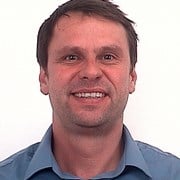The SEMI Palaeo-Water Depth (PWD) module provides high resolution 3D palaeo-bathymetries for sedimentary basins. The method is based on present day stratigraphic depth maps as the main criterion for the PWD reconstruction. During the work-flow, different numeric modelling steps are combined including decompaction and compaction of stratigraphic units as well as the effect of isostatic compensation. Following, the numeric reconstruction is fine-tuned using well described and published PWD indicators such as regional depositional geometries and palaeo environments, micro- palaeontological estimates, lithologies and sedimentary structures. The resulting quantitative PWD estimates serve as initial input parameters and have a significant influence on the subsequent basin modelling work-flow and results. For example, palaeo-bathymetries predetermine basin scale sediment routing systems and thus localities of deposition and preservation of organic carbon, potential hydrocarbon migration pathways, localities and quantities of hydrocarbon accumulations (Kjennerud & Sylta, 2001).

Figure 1: Simplified work-flow for the reconstruction of palaeo bathymetries.
Method and data requirements
The SEMI PWD reconstruction is based on geological observations from seismic and well data. The methodical background for 2D and 3D reconstructions for two depositional scenarios, namely the passive infilling and the active progradation, is described by Kjennerud et al (2001) and Kjennerud and Sylta (2001). A PWD software module is implemented in the SINTEF basin modelling tool SEMI.
In order to obtain a robust numeric PWD reconstruction several input data are essential:
- present day bathymetry
- depth converted seismostratigraphic maps for all key horizons
- a depth to the basement map
- data from the key calibration wells
- a well described lithological model
The observational driven calibration of the modelled (numeric) PWD reconstructions relies on:
- micropalaeontological estimates from key wells
- water depth indicators from seismics, e.g. sub-aerial erosion, shelf breaks etc.
- facies/palaeogeographical maps
- other relevant data (publications, general geological understanding, etc.)

Figure 2: Depositional scenarios used for the PWD reconstruction (modified from Kjennerud, 2001). a) Restoration methodology for infilling sequences. In this case we assume that sediment thickness correlates with PWD. The figure shows an example how to reconstruct the topography at the base of unit A. Thereby, the relative topography of B is reflected by the thickness distribution of unit A. The resulting topography B (final numeric reconstruction) is then calibrated against external constraints such as areas of zero water depth (in red) and micropalaeontological estimates. b) Restoration methodology for prograding sequences. In this case, sediment thickness correlates inversely with the PWD, i.e. the maximum thickness will correspond to the shallowest area. The decompacted geometry of the clinoform is used to shape the proximal part of the basin. Their geometry and height are regarded as certain bathymetry indicators.
Experience
The SINTEF Basin Modelling Group is one of the pioneer's in the field of palaeobatymetry reconstruction. Since 1996 active research has been carried out and the group gained a broad experience performing studies in different geographical and geological settings.
Selected references
Kjennerud, T., 2001. Palaeobathymetry and rift basin evolution - With particular reference to the northern North Sea Basin. PhD Thesis, NTNU Trondheim, pp. 320.
Kjennerud, T. & Sylta, S., 2001. Application of quantitative palaeobathymetry in basin modelling. Petroleum Geoscience 7, 331-341.
Kjennerud, T., Faleide, J.I., Gabrielsen, R.H., Gillmore, G.K., Kyrkjebø, R., Lippard, S.J. & Løseth, H. 2001. Structural restoration of Cretaceous-Cenozoic (post-rift) palaoebathymetry in the northern North Sea. In: Martinsen, O. & Dreyer, T. (eds.): Sedimentary Environments offshore Norway - Palaeozoic to Recent. Norwegian Petroleum Society Special Publication 10, 347-364.
Kjennerud T. & Gillmore G. K., 2003. Integrated Palaeogene palaeobathymetry of the northern North Sea. Petroleum Geoscience 9, 125-132.
Kjennerud, T. & Vergara, L., 2005. Cretaceous to Palaeogene 3D palaeobathymetry and sedimentation in the Vøring Basin, Norwegian Sea. In Doré, A. G. and Vining, B. (eds): Petroleum Geology: North-West Europe and Global Perspectives - Proceedings of the 6th Petroleum Geology Conference, London (The Geological Society), 17 p.
Nielsen, J.K., Lothe, A. E. & Daszinnies, M. C. 2010. Reconstruction of the palaeobathymetry of the Hammerfest Basin, Norwegian Barents Sea. 29th Nordic Geological Winter Meeting, Oslo, Norway, 11-13 January.
Wien, S.T. & Kjennerud, T., 2005. 3D Cretaceous to Cenozoic palaeobathymetry of the northern North Sea. Norwegian Petroleum Society Special Publication 12, 239-251.

